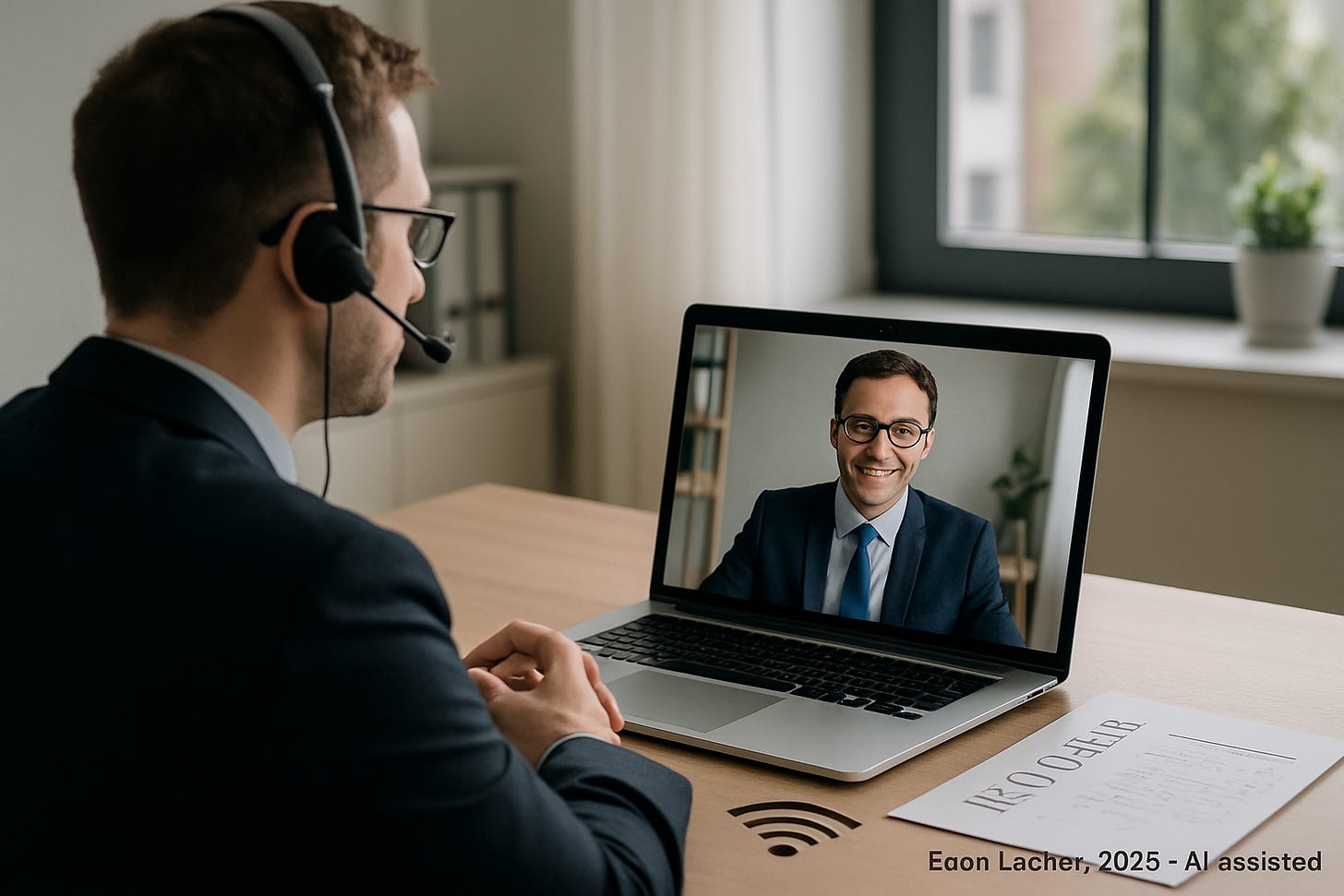Video Interviews
Navigating the New Normal: Professional Video Interviews
The landscape of video interviews has evolved dramatically since my first experience nearly thirty years ago, when only cutting-edge technology companies could manage such digital interactions. Today, they are commonplace—but the principles of preparation and adaptability remain unchanged.
The Early Days of Video Interviews
My initial foray into video interviewing occurred in a specialized media room at a leading tech firm. At the time, this was regarded as advanced, and only a select group of technology leaders had the resources to support such endeavors. Looking back, the process was less than successful—a reminder that innovation often brings growing pains. Reflections on a Video Interview
The Modern Standard: Ubiquitous, Yet Imperfect
High-speed internet and stable platforms now support widespread adoption of video interviews. Technical difficulties can still emerge, underscoring the need for resilience and preparation. Successful participation demands readiness not only in subject matter, but also with respect to the technological format.
Preparing for Success: Key Strategies
Whether acting as a candidate or an interviewer, understanding the medium is crucial. Consider these professional practices:
Request details about the technological setup in advance.
Test your equipment and internet connection beforehand.
Familiarize yourself with prevailing norms and etiquette for virtual communication.
These steps streamline the process and contribute to a more productive, efficient interview experience.
Insights from the Interviewer’s Perspective
As Katy Rabe highlights in her LinkedIn feature Mastering Video Interview Etiquette the interviewer typically brings far greater experience to the table. While candidates might participate in a handful of interviews over several months, interviewers often conduct them weekly or even daily, making their expertise central to the process.
A Shared Goal: Collaborative Exploration
Regardless of role, both participants are striving for a mutually beneficial fit. Approaching interviews as collaborative explorations—rather than one-sided assessments—enables more thoughtful conversations about the role’s expectations and opportunities.
Culture Signals and Professionalism
Professionals should not hesitate to clarify details about format, process, or technology. A well-prepared candidate will earn respect from seasoned interviewers. However, if met with dismissiveness or inflexibility, those reactions may serve as revealing indicators about organizational culture and warrant reevaluation of the opportunity.
Conclusion
The foundation of a successful video interview lies in preparation, adaptability, and a spirit of collaborative engagement. By mastering both technology and communication, candidates and interviewers alike can extract maximum value from every digital interaction, shaping better outcomes for all involved.


